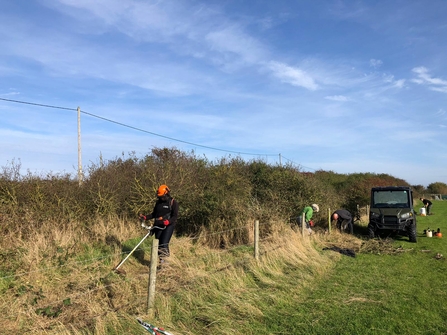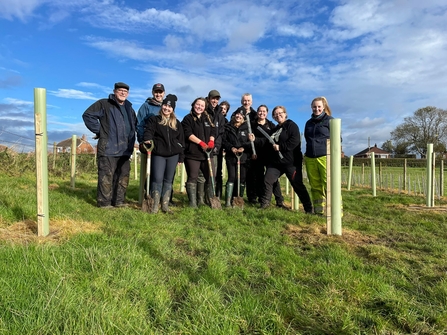Over the past couple of months we have been carrying out work on an exciting project at Spurn!
The Trust acquired funding from the Government Countryside Stewardship scheme to gap-up a 70m space in one of our hedgerows, to create a continuous length of dense shrubbery.
We took our 2023 trainees Sam and Emma on a trip to Mires Beck Nursery in North Cave to learn all about the different hedgerow species and their properties, propagation methods, carbon offsetting projects and their charitable green therapy operations. (Mires Beck provide work experience opportunities and social therapeutic horticulture for adults living with the challenges of Autism, learning and physical disabilities.)
After discussing which native species are required for hedgerow gapping up, we chose a majority of hawthorn and blackthorn as these dominate in the local area. We also included wych elm, hazel, alder buckthorn, holly, and dogwood, as the more diverse the species are in a hedgerow, the more wildlife it is likely to support, due to the plants’ differing flowering and fruiting times.
With the help of our wonderful task day volunteers, we began clearing the 70m gap of overgrown bramble and grasses, to prepare the area for re-planting.
This coincided with receiving a donation of new electric brush cutters from the Matthew Good Foundation, which made the job easier, quieter and more climate friendly.



